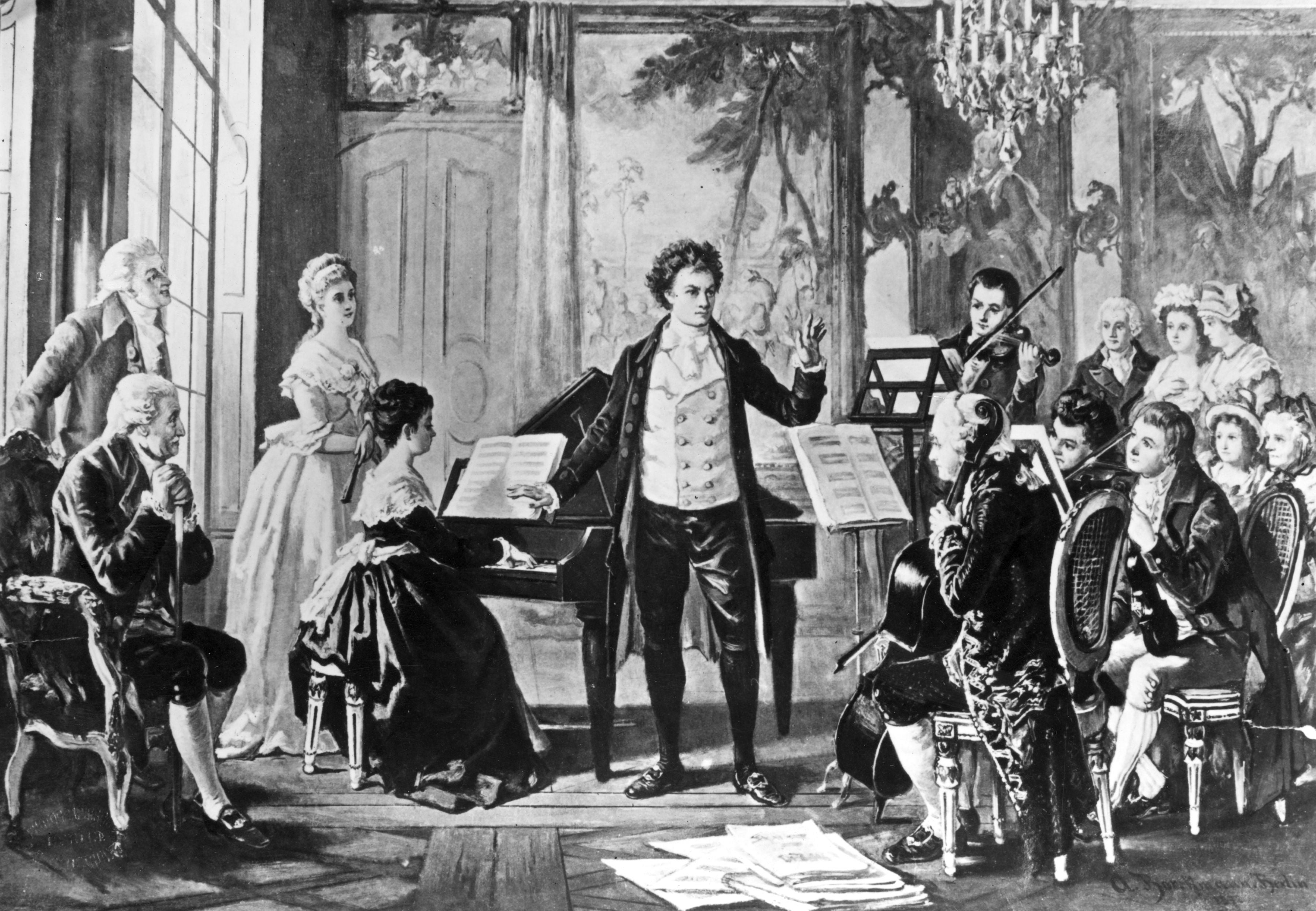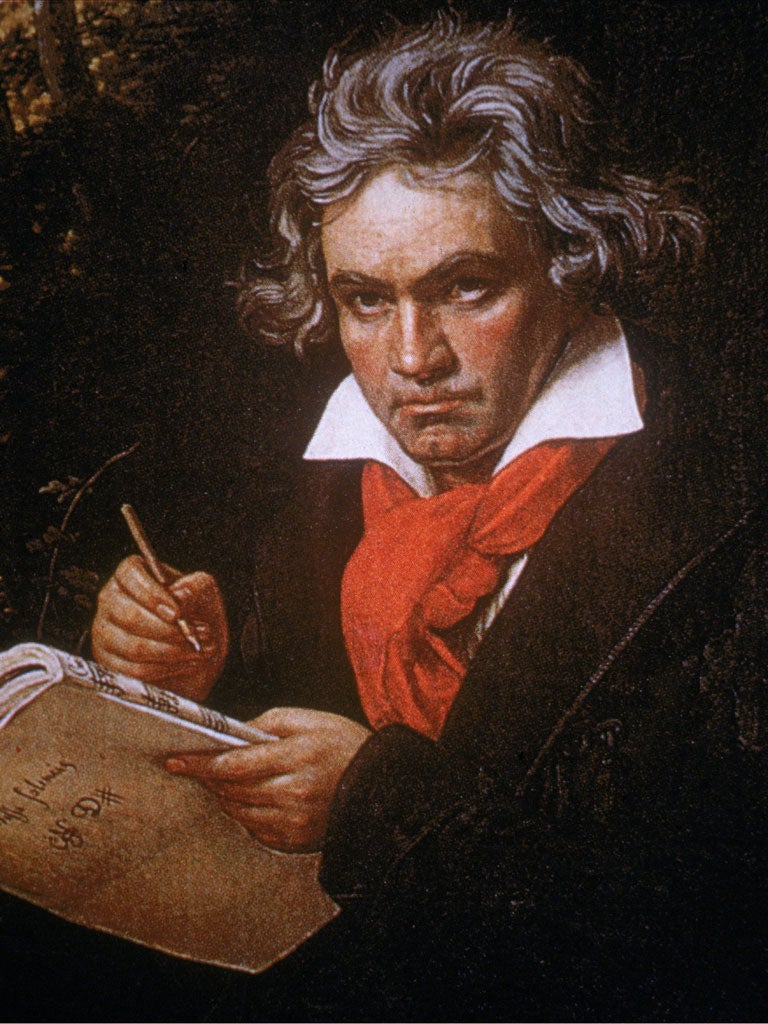I believe you can feel Beethoven’s deafness in his music
Ever since I was a little girl I wondered how deafness affected Beethoven’s music. Now I believe the impact was profound, writes Gabriela Lena Frank

Your support helps us to tell the story
From reproductive rights to climate change to Big Tech, The Independent is on the ground when the story is developing. Whether it's investigating the financials of Elon Musk's pro-Trump PAC or producing our latest documentary, 'The A Word', which shines a light on the American women fighting for reproductive rights, we know how important it is to parse out the facts from the messaging.
At such a critical moment in US history, we need reporters on the ground. Your donation allows us to keep sending journalists to speak to both sides of the story.
The Independent is trusted by Americans across the entire political spectrum. And unlike many other quality news outlets, we choose not to lock Americans out of our reporting and analysis with paywalls. We believe quality journalism should be available to everyone, paid for by those who can afford it.
Your support makes all the difference.From the time I was a little girl, I have been fascinated with how deafness affected Beethoven. If you look at his piano sonatas, in that first one in F minor, the hands are very close together, and the physical choreographies of the left and right hands are not that dissimilar. As he gets older, the activity of the hands become more dissimilar in his piano work and farther apart.
The progression over the course of the sonatas – a musical document of his hearing loss in transition – is not perfectly linear by any stretch of the imagination, but it’s undeniable. By the time of the “Waldstein” sonata, not only are the hands far apart, but they are doing very different things: that left hand pounding in thick chords against the right hand’s spare little descending line, for instance.
Well, I recall from my therapy classes for hearing-impaired children that I was taught to recognise thick from thin. My therapist had me close my eyes and indicate from which direction a rumbly drum was coming as opposed to a high-pitched whistle. I couldn’t really hear them, but I could certainly feel them and their contrasting energies.
I think it’s fascinating, too, that as Beethoven’s hands stretched for lower and higher notes, he demanded pianos with added notes, elongating the pitch range of the keyboard; he asked for physically heavier instruments that resonated with more vibration. More pitch distance and difference, and more vibration and resonance, create a recipe for happiness for a hearing-impaired person, trust me. A more dissonant and thick language, with clashing frequencies, also causes more vibration, so the language does get more physically visceral that way, too.
That said, if I don’t wear my hearing aids for a couple of days, my composing ideas start to become more introverted. This can produce music that is more intellectual, more contrapuntal, more internal, more profound, more spiritual, more trippy. And I think these are also hallmarks of Beethoven’s later music, and not just for piano.
Yet more from my own experience: when I’m really under a deadline and need to get new ideas quickly, I don’t usually listen to music, as some composers do. In fact, I do the opposite: I take off my hearing aids and stay in silence for a few days. In the absence of sound, my imagination goes to different places. It’s a bit like being in a dream when unusual and often impossible events come together, the perfect place from which to compose. And when I put in my hearing aids again, I can feel all these wonderful ideas and connections fly away, just as a dream disappears when awakening.
I wonder, is it an exaggeration to say that composers after Beethoven, the vast majority of them hearing, were forever changed by a deaf aesthetic? And that the modern-day piano wouldn’t be with us if a deaf person hadn’t demanded its existence?
This is beyond my expertise, but I’ve also wondered about sign language. Are there certain spatial gestures in the language that appear in the choreographic execution of certain kinds of music? And if so, does this imply yet more levels in which a deaf sensibility infuses the music-making of a hearing world?
This is a very unnatural position for your hands to be in, and in fact it mimics the wrist-breaking karate locks taught in dojos
I often wonder how Beethoven would react to modern-day hearing aids, considering his great frustration with the ear trumpets of his day. Personally, I miss the old analogs of my girlhood for their simplicity. Nowadays it’s an effort not to roll my eyes as a technician fits me with the ubiquitous digital aids that, in addition to all manner of dazzling bionic-lady bells and whistles, default to the type of correction desired by late-deafened people – namely, high frequencies and spatial reorientation to help with speech recognition. That’s completely understandable, as losing the ability to communicate with loved ones is an awful and dispiriting experience.
Yet those of us born with hearing loss are often champion lip-readers (as I am) or use sign language. And whether or not we are musical, we join musicians with hearing loss (at any stage) in desiring hearing aids that prioritise beauty of sound, unchanged pitch, unchanged timbre and naturalness — restoring proper weight to middle and low frequencies, and spatialisation. We don’t want hearing aids that ply our sound world with obvious artifice, like a supposedly “acoustic” album that’s been overworked by a manic sound engineer.
In this vein, I don’t think Beethoven would like how so many modern-day digital hearing aids massage all kinds of processes into what the wearer hears. It helps to have an imaginative and sensitive technician, preferably one with experience with performers and composers. A good fitting is an art so the music can just breathe.
At the piano, I usually start practicing without my hearing aids, entering a world of profound silence familiar from my earliest years, when I wasn’t yet fitted. At first, I’m still hearing the music in my head, but after a while, I’m more aware of the choreography, how it feels like a dance in my hands. Focusing on a physical experience that feels good and healthy can counteract bad habits that appear when you are only listening to the sound.
For instance, if one plays a large chord of, say, eight notes, the tendency will be to bring out the lowest note and the highest note — the bass and the melody — to give them more audibility and importance. Because of the structure of the hands, this means the weakest pinkie fingers are bringing out the most important notes. To help the poor fingers out, the hands may be tempted to angle out, left hand pointing to the bass, right hand to the melody.

This is a very unnatural position for your hands to be in, and in fact it mimics the wrist-breaking karate locks taught in dojos, inviting injury. Imagine a series of these chords up and down the keyboard, in such an unnatural position. But because you are chasing a full-bodied sound from this eight-note chord and not paying attention to its physicality, you start to do dangerous things. With the ability to take the sound out of the equation, I focus on the feel. I solidify a good technique first and know it. Knowing it, I can hang on to it once I do put my hearing aids back in and then work on the sound.
So, ironically, even though we are talking about a sonic art form, sound can be a distraction. Sound can take your attention away from the many other factors that go into making music. Music, after all, is about so much more than volume. For my own loss, I’m just missing volume. I’m not missing everything else one needs to make or enjoy music. And I even have perfect pitch, so in some ways, I hear better than hearing people.
And I think that had to have happened to Beethoven. He learned to create music without sound, however reluctantly. While he increasingly withdrew from society and disliked talking about his disability, he left us a living document of his hearing loss in transition, likely starting with music written in his mid- to late twenties, when his hearing began to fade. In other words, I think he encoded his deafness in music. And as I say, the progression in his music is not a perfectly linear one, just as his progression through deafness was likely not perfectly linear, but the journey is there. Unmistakably.
Gabriela Lena Frank is a composer and pianist and the founder of the Gabriela Lena Frank Creative Academy of Music, which aims to foster diverse compositional voices and artist-citizens
© The New York Times




Join our commenting forum
Join thought-provoking conversations, follow other Independent readers and see their replies
Comments